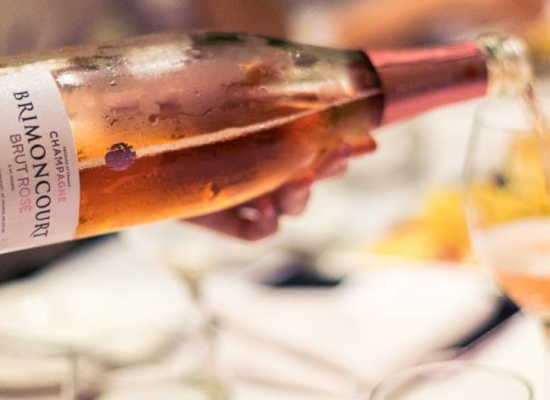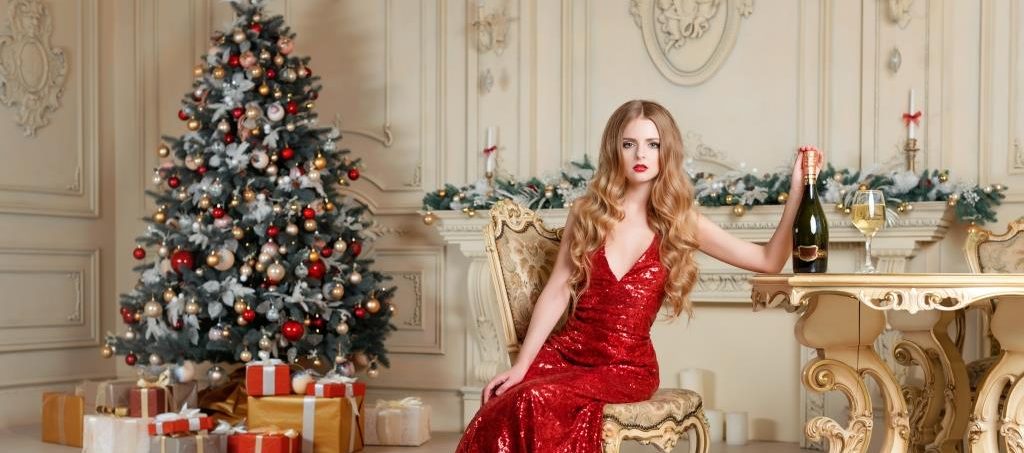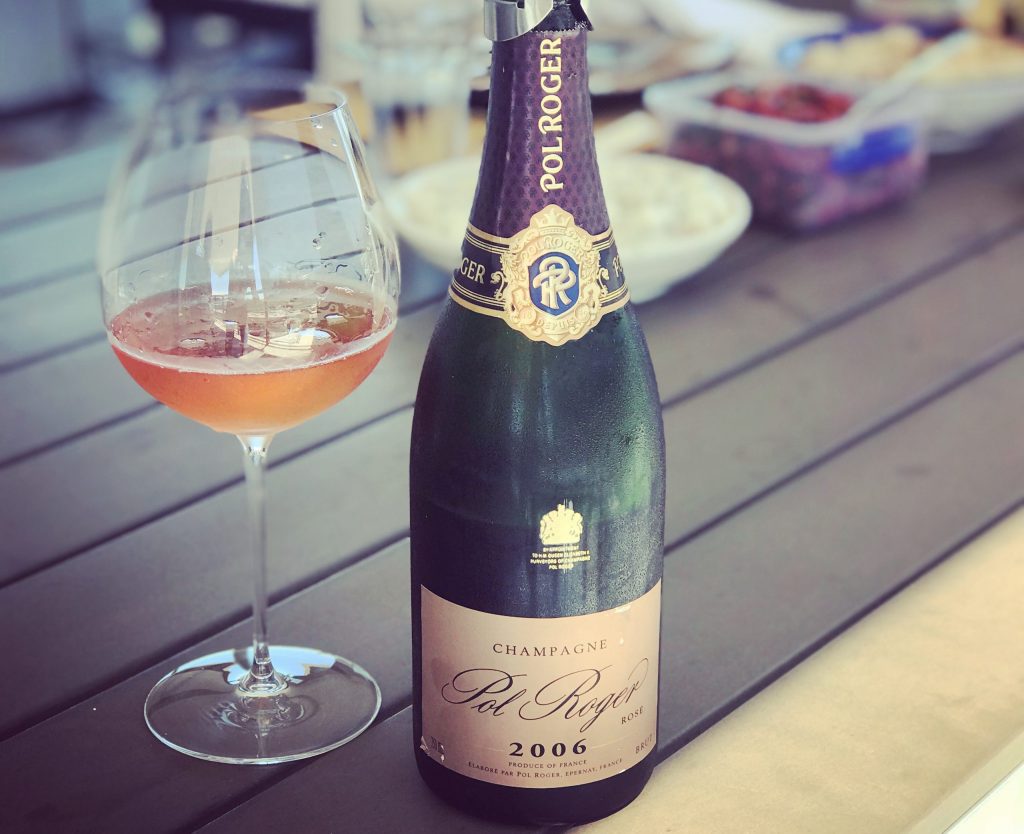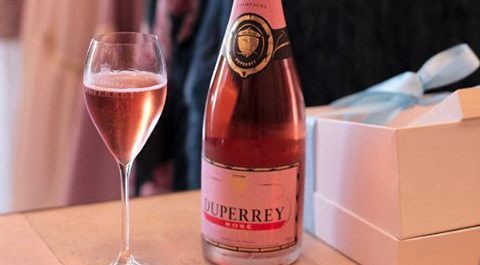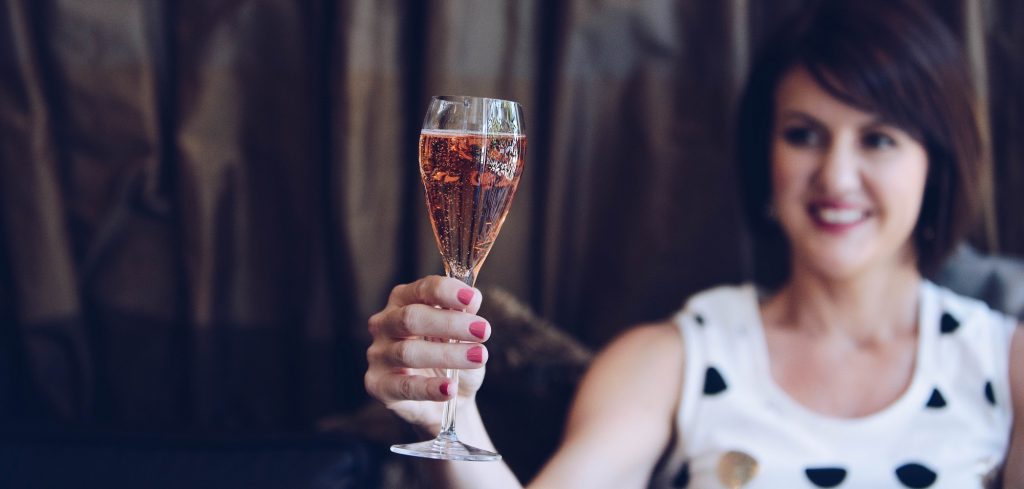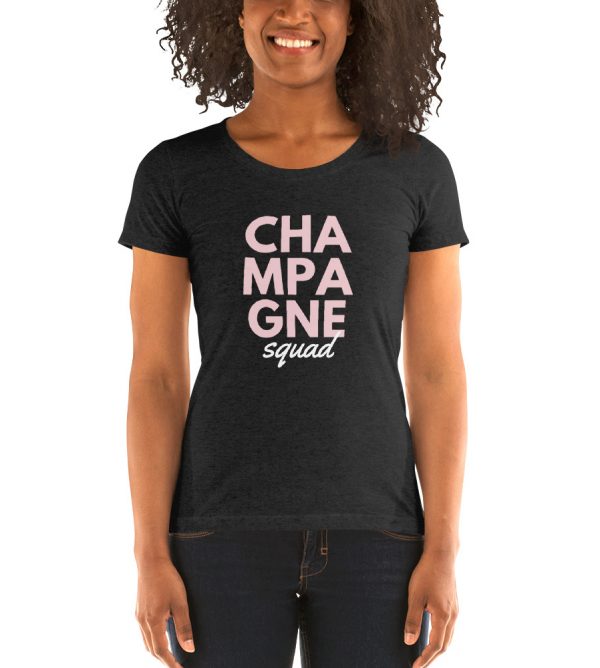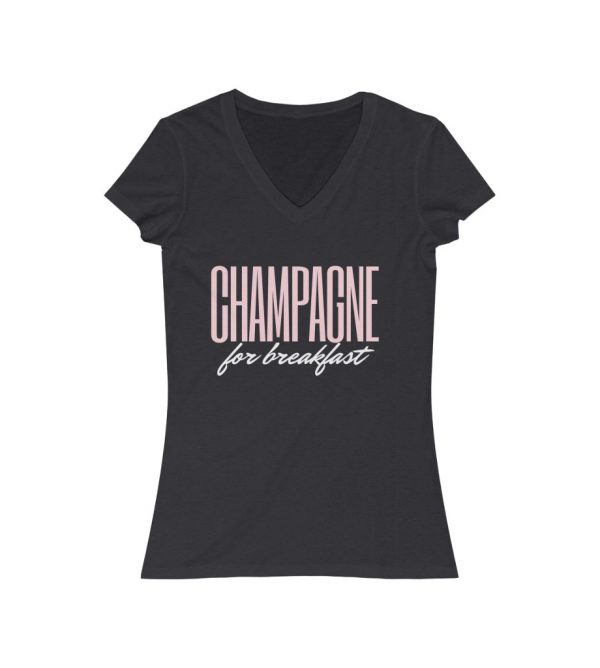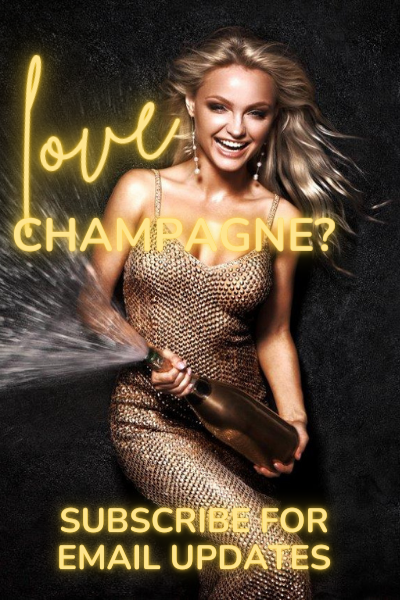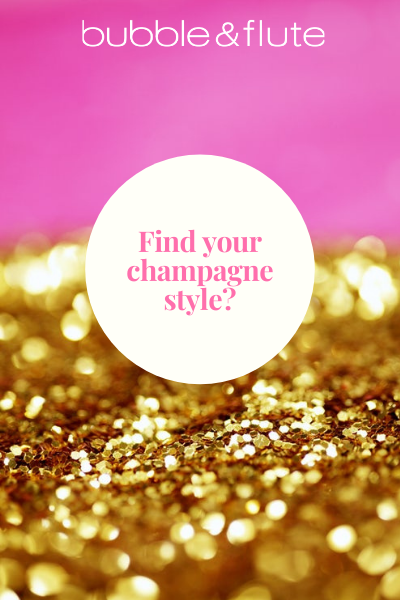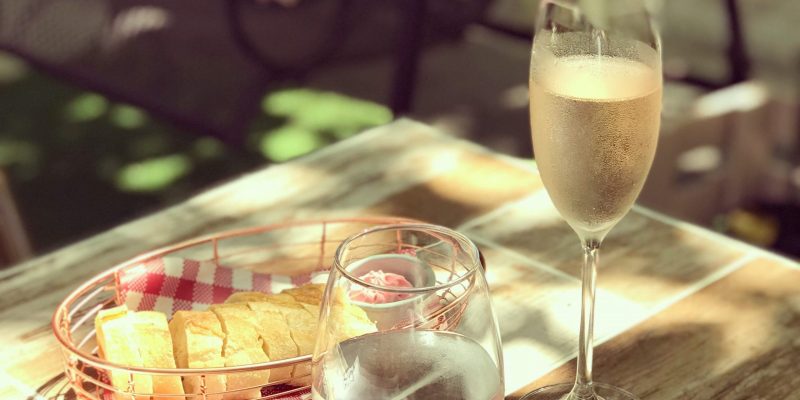
My Top Five Spring Rosé Champagnes
- Marnie Nichols
- September 1, 2021
- Blog, Champagne and the seasons, Rosé Champagnes, Top Fives
I love spring almost as much as I love rosé champagne so I am very excited to bring them together with my top five spring rosé champagnes.
When I was in France, I noticed the locals all thought of rosé champagne as the ultimate summer champs. I see it a bit differently as the ultimate spring champagne. For me in Queensland, our spring is often hotter than the French summer so I pop the rosé champagne in spring and bring out the blanc de blancs for summer when it’s really hot.
My top five spring rosé champagnes
Spring rosé champagnes are a special style… they are light to medium bodied, fragrant, and floral that you drink as an aperitif or – if you are me – all day or all night depending on the occasion. Summer rosé champagnes (for my climate anyway) need to be super-light and fresh and autumn or winter champagnes are rich and bolder, can warm you up and would be matched with food. I do have one other top five post for rosé champagnes, and that was my rosé champagne guide to the silly season.
If you need to brush up on how they make rosé champagne, catch up here.
But let’s get into my Spring rosé champagnes…
1. Pierre Gimonnet & Fils
This is the only producer in this list that I didn’t visit during my recent trip to Champagne. But I have tried (and loved) their rosé champagnes. I first tried the Pierre Gimonnet Rose De Blancs during one of my famous birthday long lunches (well they are famous – or should that be infamous amongst my champs-loving friends … they start at 1.30pm and finish at 11.30pm!). We were dining at Cru Bar (which is where all the long lunches take place) and I asked my friends to surprise me with a rosé champagne I hadn’t tried before. They came back with a bottle of Pierre Gimonnet Rose De Blancs… which we finished in one round and went back for a few more bottles.
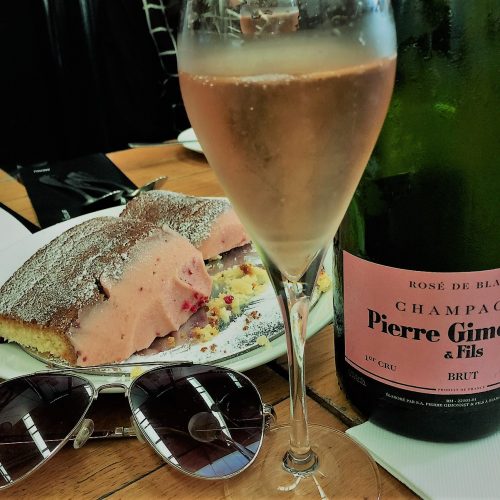
What makes this rosé champagne special is that it is 100% Chardonnay except for a VERY small amount of blended red wine (a tiny 6%)… which is exactly what you’d expect from Pierre Gimonnet (and of course from spring rosé champagnes). All of their wines are 100% chardonnay except this one, from their 28 hectares of chardonnay vines in the Côte des Blancs (Cuis and Verus for premier Crus and Cramant, Chouilly and Oger for grand crus).
This champagne is crisp and pure, light and fresh. A very pale pink colour, there are strawberries with pink grapefruit and a hint of citrus zest (orange more than lemons for me). And of course all the Côte des Blancs chardonnay brings a (slightly predictable) minerality and clarity.
At Champagne Gallery, in stock now, for $90.
Bottom line… spring garden party aperitif perfection.
2. Champagne De Sousa
De Sousa is an exciting certified organic third-generation family producer based in Avize in the Côte des Blancs. I met with Charlotte, one of the three children (alongside Julien and Valentin) who will be the new generation to run the house, learning from their father Erick.
Being based in Avize in the Côte des Blancs, you know their wines are going to be chardonnay driven and the Brut Rosé is no exception. 92% chardonnay and 8% pinot noir (from Aÿ, and barrel fermented), this rosé champagne is fresh and surprisingly fruity for a small amount of pinot. So different in colour, nose and palate to the Pierre Gimmonet despite being a similar blend, which I put down to the barrel fermentation of the pinot… the De Sousa has a hint of spiciness and roses. 7g/l dosage and 20% reserve wines.
You can order your De Sousa spring rosé champagne from Emperor Champagne for $109.
Bottom line… the extra fruit gives this a bit of versatility, you can serve it as an aperitif but also with some fresh berries for a lunch-time dessert.
3. Billecart-Salmon Brut Rosé
I’ve had a number of experiences when tasting rosé champagnes from the houses that produce some of my absolute fave brut champs, and I have been a bit disappointed in their rosés not living up to the impression left by their Brut champagnes.
For Billecart-Salmon and the Billecart-Salmon Brut Rosé… it’s the reverse. The rosé is the champion of the house and it’s hard for the Brut Reserve to compare.
And it’s not just me. The Billecart-Salmon Brut Rosé is one of the most widely and highly regarded rosé champagnes on the planet amongst wine writers, sommeliers and chefs. In fact, it is one of the most ‘listed’ rosé champagnes in the world. And by ‘listed’ I mean listed on the menus of award-winning restaurants for its impeccable pairing ability for breakfast, lunch or dinner menus from canapes through to delicate desserts.
The blend is not so different from the Billecart-Salmon Brut Reserve, but the rosé has a little more chardonnay and a little less meunier (it’s 40% chardonnay, 30% pinot meunier from Vallee de la Marne, and 30% pinot noir from the Montagne de Reims and Vallée de la Marne), with 7% of pinot noir from Mareuil vinified as a red wine.
The house describes its rosé as romantic… and the colour alone can break my heart every time I pour it, and the flavours and aromas are like a raspberry kiss with a hint of citrus. Spring rosé champagnes perfection!
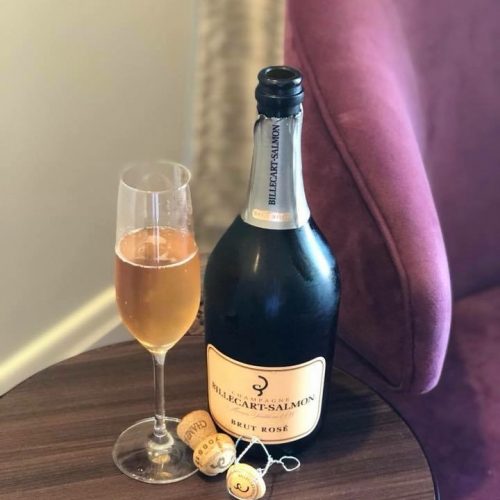
More tech specs… 9g/l dosage, 40% reserve wines and aged on lees for 36 months.
You can order yours from Emperor Champagne for $115… this is not a champagne you will ever really find on sale… a good sign of a true classic.
Bottom line… Romantic rendezvous staple or delicious degustation pairing.
4. Bruno Paillard Premiere Cuvée Rosé
Having the Bruno Paillard Premiere Cuvee Rosé in my spring rosé champagne list (which are all light and delicate) at a quick glance looks a bit out of place because it is a majority pinot noir rosé champagne. Add in the solera blend of reserve wine dating back 25 vintages, and you have what sounds like an impressive and more powerful style of wine.
But it’s not at all. I enjoyed a glass of the Premiere Cuvée Rosé with Bruno Paillard himself and we talked extensively about his wines and philosophy (more from my interview coming soon). He is a very modern wine maker, as he only started making champagne in 1981. And his cellars are all above ground in a modern and highly practical site away from the city centre of Reims (right next door to Piper Hiedsieck).
He is incredibly passionate about his champagnes and Champagne in general, but also has a vineyard in the south of France where he makes still Provence rosé wine which I think adds something to his approach to his rosé champagne.
A very delicate colour and a subtle style. I think Tyson Stelzer describes it perfectly when he said of this cuvée that it is “A pretty and restrained rosé of ultra-pale salmon hue and elegant pomegranate, strawberry and watermelon flavours. In time, flickers of black cherries emerge. It’s lighter on its feet and more subtle than previous blends, with a delicate and graceful air, driven by a structure of fine chalk minerality.”

You can buy the Premiere Cuvée Rosé at Emperor Champagne for $129 and I strongly recommend you do!
Bottom line… this a rosé champagne you want to enjoy watching a sunset in the early days of spring when you might still get a fresh chill in the air.
5. Louis Roederer 2010 Rosé
So the Louis Roederer Rosé has rated a mention from me before, but it is so exquisite as a spring rosé champagne that I have to list it again.
When I tasted this for the first time at a dinner with Louis Roederer cellar master, Jean-Baptiste Lécaillon, he proudly told us that his 2010 rosé had just been awarded the best rosé in the world. And that to win this award it had beaten his own current vintage Cristal Rosé, one of the most expensive wines on the planet! But far from being annoyed or disappointed, Jean-Baptiste was clearly immensely proud of his 2010 rosé because the award didn’t mean his Cristal Rosé was any less of a wine… just that the 2010 rosé was really quite remarkable.
I just love listening to Jean-Baptiste talk about his wines… he brings poetry to champagne. Just read how he describes his vintage rosé…
“… the concentration, fruitiness, and compactness of the Cumières pinot noir grapes are transcended by the elegance, purity, and freshness of the finest Chardonnay grapes cultivated on the Côte des Blancs.”
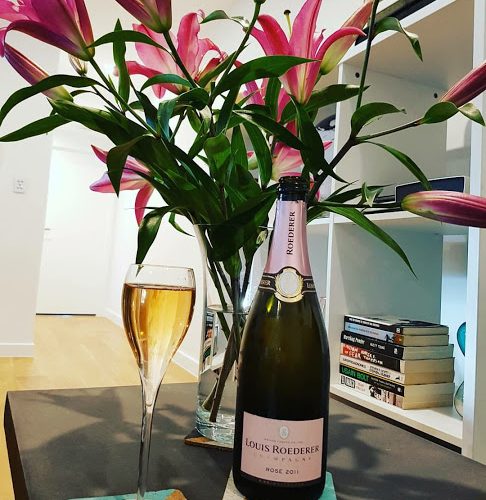
And that sums it up for me exactly! For a rosé that is blended with still red wine and made from 65% pinot noir and 35% chardonnay, this wine is given its predominant personality from the chardonnay component. It is strikingly fresh and pure, even somewhat sharp and chalky (which is exactly what I expect from a Louis Roederer wine), yet you can still find the exotic floral and spicy fruit notes in this wine that belie its salmon pink colour and its rosé nature. All of which makes it simply stunning… and a firm favourite for me on my spring rosé champagnes list.
I don’t know where you can find the 2010 (it is a few vintages ago now) but the current vintage is 2012 and at Dan Murphy’s for $110.
Bottom line… I often describe opening a bottle of any Louis Roederer cuvée as a bit like a visit to a modern art gallery… it’s an all-in experience. But you aren’t always in the mood for thinking about art or wine. So if you’re looking for an easy option, don’t open the Roederer! But if you are in the mood for an experience that will probably be unexpected but definitely exceptional, the Louis Roederer 2010 Rosé won’t disappoint! I can’t wait to taste this wine over the years to see how it ages.
And that’s a wrap for my spring rosé champagnes
If you want to read up on some of my other fave rosé champagnes, check out some of my other posts…
Champagne Brimoncourt Brut Rosé
Rosé Des Riceys… A Still Rosé Wine They Make In Champagne
Rosé All Day! – Part III The Official Bubble & Flute Champagne Guide To The Silly Season
Pol Roger Rosé 2006 Is Sexy, Seductive, And Full Of Flavour
Champagne Duperrey Rosé Brut
Rosé Champagne
Bubble & Flute promotes the responsible consumption of alcohol for individuals of legal drinking age in their country. Prices and links correct at time of publication.
